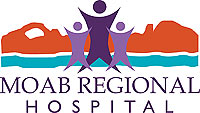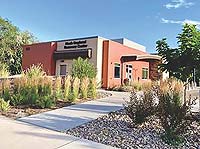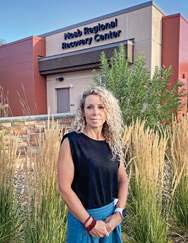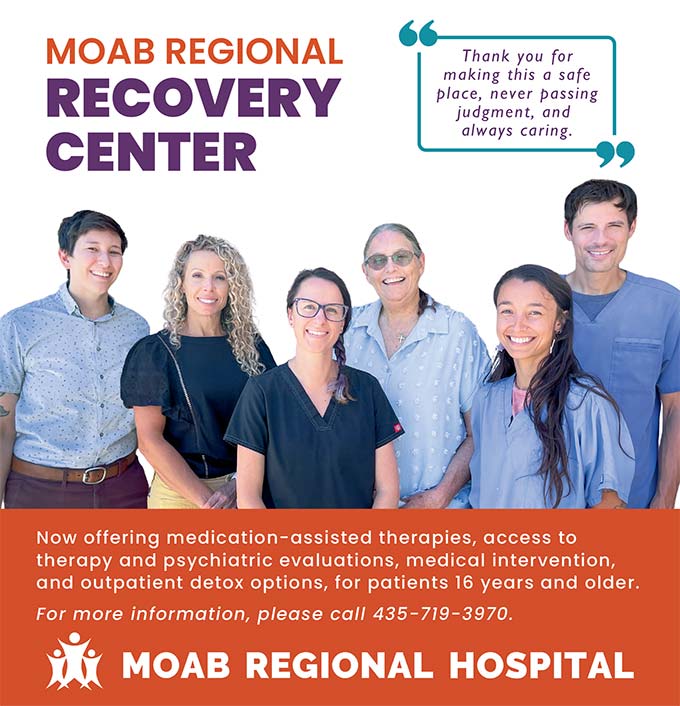|
|
HEALTHY HAPPENINGS - September 2023
|
You Know Someone Affected by this Epidemic—But Why?
by Ray Andrew, MD
|
 “When I started teaching in 1986,” Gail told me, “we all pitied the teacher who had a child with ADHD or autism in her or his class. When I retired in 2016, each of us counted ourselves lucky if we only had five of them per class.” In case you haven’t noticed, both attention deficit and autism spectrum disorders (ASD) have exploded in America. Today, you would be hard-pressed to not know one or several people with one or the other. “When I started teaching in 1986,” Gail told me, “we all pitied the teacher who had a child with ADHD or autism in her or his class. When I retired in 2016, each of us counted ourselves lucky if we only had five of them per class.” In case you haven’t noticed, both attention deficit and autism spectrum disorders (ASD) have exploded in America. Today, you would be hard-pressed to not know one or several people with one or the other.
Have you ever wondered where these never-ending epidemics came from? Why do parents notice that some children are different from birth? Why do other children develop perfectly normally until a certain age, and then suddenly stop talking, stop walking, or stop making eye contact with their parents?
Evolutionary biologists claim that changes in DNA occur over millions of years to convey survival advantages to species. I’m not sure what survival advantage is conveyed by an inability to sit still, focus, and fully engage with other human beings on an emotional level, but species mutations don’t occur in the miniscule timespan of decades, and there is no inherited gene that causes people to develop behavior disorders.
Calling the increase in ASD cases an explosion may even be downplaying the reality of it. The first cases of ASD in history occurred in the 1930s. Now the CDC admits that it affects 1 in 36 children, with four times as many boys as girls. Not only is this trajectory alarming, it is unsustainable. At this rate—unless society wakes up and does something different—it’s only a matter of years before ASD will be the rule and healthy brain development and function the exception.
An ounce of intellectual curiosity demands that we consider the very real possibility that something we are doing to ourselves as a society is causing these epidemics…and that the sudden onset of autism in a healthy child must be preceded by something very damaging to the brain.
 There are many possibilities. All we have to do is think about practices, lifestyles, and things that were rare or nonexistent before the 20th century, things that have increased with every decade, and that directly affect the developing brain. There are many possibilities. All we have to do is think about practices, lifestyles, and things that were rare or nonexistent before the 20th century, things that have increased with every decade, and that directly affect the developing brain.
Considering these criteria, it’s hard for the honest observer not to be suspicious of toxins. In a twist of irony, we are told that substances (vitamins, minerals, herbs, hormones, amino acids, fatty acids, peptides, etc.) that have supported human health for thousands of years may be dangerous and should be subjected to government approval, but the thousands of new chemicals we inhale, touch, eat, drink, inject into our bodies, and put on our skin require little or no safety testing whatsoever. Hmmm.
Toxicologists have noted that one of the most effective ways for a woman to rid herself of a large amount of toxins from her body is to get pregnant. Unfortunately, those toxins are not going into the toilet. Studies of newborn babies’ umbilical cords and placentas have demonstrated the presence of an average of 250 toxins—not the best way to enter the world. This is why we recommend that women of childbearing age undergo identification and removal of chemicals and heavy metals as early as possible, at least a year before becoming pregnant.
As children grow, the unhealthy chemicals they inherited from their mothers are joined by others. Think about artificial food colors, preservatives, pesticides, herbicides (glyphosate is especially dangerous), taste enhancers (such as MSG), artificial sweeteners, and so many other toxins that have been found to impair brain function. The fact that any American survives childhood with seemingly normal neurological development nowadays is a testament to the miraculous resilience and detoxification capacity of the human body. But not everyone is so lucky.
In light of the unprecedented toxic burden to which Americans have increasingly been subjected over the last century, you might be tempted to write off toxins as the cause—or at least a cause—of this epidemic of neurodevelopmental/behavioral disorders. After all, with everyone being exposed to some extent, shouldn’t everyone be affected? Not exactly. Each child has a different level of exposure to different toxins, both before and after birth. And each child has a different level of tolerance for toxins, depending on what are called genetic polymorphisms or single nucleotide polymorphisms (SNPs). These are slight genetic variations that create more or less risk of different conditions. 
SNPs make it easier or harder for the body to remove specific toxins. This is one reason some people require a LOT of anesthesia for surgery, while others are so knocked out that they have a hard time waking up from it. Or why one person can drink caffeine in the morning and have trouble sleeping that night, while another person can drink caffeine at night and go right to sleep. Other SNPs make it possible for some people to tolerate a case of beer in a single sitting (although not without serious long-term consequences) while others become severely ill after drinking a single can. Due to SNPs, some children exposed to certain toxins will develop autism, others will develop Alzheimer’s dementia many decades later, and still others will never have a problem at all.
As with cancer, there is no single cause of neurodevelopmental disorders. For this reason, no single treatment approach will work for everyone. Some will benefit from mineral rebalancing. Others from repair of the gut lining, which in turn reduces brain inflammation. Others will benefit from avoidance of gluten, dairy, and/or other foods. Many will require detoxification of chemicals and/or heavy metals. Because the brain is so resilient, it takes a lot of damage to cause noticeable impairment in its function. Consequently, for a child to develop a behavioral or neurodevelopmental disorder, it often requires multiple “hits” to the nervous system. As a result, effective treatment requires an approach that addresses a variety of insults to the developing brain. The earlier in life that this is done, the better.
Your child can bounce around between a handful of prescription drugs designed to Band-Aid the symptoms of his condition. He can receive special accommodations at school. She can spend the rest of her life in weekly or monthly therapy to help her learn better in school and function better in society. He can attend a school for special needs children, at a cost of $14,000 to $80,000 per year. Or he can undergo a comprehensive assessment and treatment regimen that addresses known causes of brain dysfunction. This is not to say that medicine, IEPs, and therapy cannot be valuable tools for affected children. Rather, it’s acknowledging the obvious: Without treating underlying causes, these tools are like paddling a canoe upriver for the rest of one’s life. The choice is yours. More than ever before, you have options. Call Prestige Wellness Institute at (435) 210-0184 when you are ready to explore new possibilities. The right treatment early on can change the course of your child’s life.
|
Marijuana: Not What it Used to Be
by Dr. Paula Donnelly Cook
|
 The consumption of marijuana has undergone significant changes since its widespread use in the 1960s. As the counterculture of that era embraced the plant, the average potency of cannabis hovered around 4-6%. However, contemporary tests of marijuana samples reveal an astonishing 60% increase in potency compared to the 1970s. Because marijuana is a commonly used plant, the increased potency is a significant emerging public health issue. The consumption of marijuana has undergone significant changes since its widespread use in the 1960s. As the counterculture of that era embraced the plant, the average potency of cannabis hovered around 4-6%. However, contemporary tests of marijuana samples reveal an astonishing 60% increase in potency compared to the 1970s. Because marijuana is a commonly used plant, the increased potency is a significant emerging public health issue.
How marijuana is grown and consumed significantly impacts its potency. While the flowers of the cannabis plant, often smoked, now carry a potency of approximately 15-20%, concentrates derived from the plant have taken potency to new heights. Extracts like oils, wax, or resin, typically used for vaping, boast staggering potencies, some reaching up to 80% THC.
 Why does this potency matter? The psychoactive compound in marijuana, delta-9 tetrahydrocannabinol (THC), is responsible for the sought-after "high" or relaxation effect experienced by users. However, THC isn't without its downsides; it can trigger anxiety, agitation, paranoia, and, in some cases, psychosis. While some may only experience anxiety and paranoia temporarily during the effects of the drug, others could face prolonged episodes of paranoia, distorted thoughts, and detachment from reality, requiring medical intervention, including antipsychotic medication and hospitalization. Why does this potency matter? The psychoactive compound in marijuana, delta-9 tetrahydrocannabinol (THC), is responsible for the sought-after "high" or relaxation effect experienced by users. However, THC isn't without its downsides; it can trigger anxiety, agitation, paranoia, and, in some cases, psychosis. While some may only experience anxiety and paranoia temporarily during the effects of the drug, others could face prolonged episodes of paranoia, distorted thoughts, and detachment from reality, requiring medical intervention, including antipsychotic medication and hospitalization.
Highly potent marijuana can lead to more substantial psychoactive effects and increase the risk of immediate psychological reactions. Emergency rooms across the country, particularly in states with legalized recreational use of marijuana, are witnessing a surge in marijuana-related incidents.
In the long run, the use of contemporary high-potency marijuana comes with its own set of risks. For some users, there's a potential for addiction compounded by the heightened possibilities of reduced IQ, impaired attention, heightened susceptibility to schizophrenia and other psychotic disorders, elevated depression among teenagers, and even evidence of amplified suicidal thoughts and planning.
 The risk of developing a marijuana addiction is about 7% in the general population, whether due to increasing potency or not. The risk can be 30 to 40% higher for those who start using the drug during adolescence or use it daily. Marijuana addiction mirrors addiction to other substances: using more than intended; unsuccessful attempts to quit or cut down; experiencing cravings or withdrawal; sacrificing other responsibilities for the drug; and engaging in high-risk behavior due to use. The risk of developing a marijuana addiction is about 7% in the general population, whether due to increasing potency or not. The risk can be 30 to 40% higher for those who start using the drug during adolescence or use it daily. Marijuana addiction mirrors addiction to other substances: using more than intended; unsuccessful attempts to quit or cut down; experiencing cravings or withdrawal; sacrificing other responsibilities for the drug; and engaging in high-risk behavior due to use.
The Monitoring the Future (MTF) study, also known as the National High School Senior Survey, is a long-term epidemiological study that tracks trends in legal and illicit drug use among American adolescents and adults and personal levels of perceived risk and disapproval for each drug. Recent results reveal that the 19-50 age group has the highest recorded past-year marijuana usage in 2022. The statistics show that 44% of those aged 19-30 and 28% aged 35-50 reported using the drug.
Dr. Paula Cook earned her medical degree at the University of Utah and completed her residency at St. Mark's Family Medicine. She is board-certified in both Family Medicine and Addiction Medicine. At Moab Regional Hospital's Recovery Center, Dr. Cook integrates addiction medicine into primary care, medication-assisted treatment, and risk reduction, using a non-judgmental approach to addiction treatment that meets people where they are and considers the whole patient and their family. Follow Dr. Cook's "Addiction Files" podcast for more in-depth information on addiction and recovery.
The Moab Regional Recovery Center offers medication-assisted treatment, access to therapy and psychiatric evaluations, medical intervention, and outpatient detox options, for patients 16 years and older. For more information, please call 435-719-3970.
And be sure to mention you read about Moab Regional Recovery Center in Moab Happenings.
.

Free Community Lunch
Thursdays from 11:30am to 1:00pm at the St. Francis Episcopal Church (250 Kane Creek Boulevard, Moab). Free lunches for all who come by. Homemade soups (always several choices) or sandwiches, bread (chips with sandwiches), dessert, coffee and water. Call St. Francis Episcopal Church at 435 259-5831 for information.
Free Community Food Pantry
Fridays from 4-6pm at the St. Francis Episcopal Church (250 Kane Creek Boulevard, Moab) No ID, no name, no address, no personal information needed. We always have canned goods, bagged goods, meat. We often have bread, fresh produce, milk, cheese, fruit juice, eggs. Also personal toiletries, cleaning supplies, diapers, dog food. Feel free to pick up for someone who can't get out, or someone who is working. Call St. Francis Episcopal Church at 435 259-5831 for information.
Moab Valley Multicultural Center Food Pantry
Clients may access the Food Pantry once every two weeks. Schedule:
Mon Wed Thu: 9am-12pm, 1-5pm
Tue: 9am-12pm, 2:30-5pm
Fri: 9am-12pm
LUNCH at the Grand Center,
182 N. 500 W. Noon on Mon, Tues, Wed & Fri under 60: $6.00 over 60: $2.50 suggested donation
Moab Community Health Talks - Our Village Community Center hosts Dr. Don Leathers, naturopathic physician, and Sarah Cook, massage therapist health coach & lay homeopath in an informal round table discussion meant for community members to have their questions answered in a supportive space. Second Wednesday of each month. 1-2pm at Our Village Community Center, 721 N 500 W, Moab. Suggested donation of $5-$20. Info: ourvillage.org, phoenixrisingmoab.com, sarahcookmassage.com or 435-260-0294 or 435-259-8123
Moab Community Yoga
Tuesdays 6:30-7:30pm at the Moab Arts and Recreation Center (MARC) in the dance room. 111 E 100 N
Gyrokinesis® Class w/ Anne Howe
The Gyrokinesis® Method is a movement method that addresses the entire body, opening energy pathways, stimulating the nervous system, increasing range of motion and creating functional strength through rhythmic, flowing movement sequences. It is an original and unique method that coordinates movement, breath and mental focus. Thursdays 5:30-6:30pm. Sundari Yoga & Wellness Studio 1105 S US-191 #3 www.sundariyogamoab.com
Sheng Zhen Meditation - Thursdays 5:30-7pm at Moab Arts and Recreation Center. Other classes available and info at shengzhenmoab.com/
Community Reiki (Alternating Tuesdays, 9am & 3pm)
Join Crystal at Mindful Movement Moab, 76 S Main St Suite 15, for a free 30 minute community Reiki Session. Must be a local resident for the session. Sign up online at www.mindfulmovementmoab.com
Yoga in the Park (Wednesdays, Swanny Park, 5pm)
Join Breann with Wellness Collective for a 60 minute yoga session brought to the community by a partnership with USARA. Mats are provided and the class is open to everyone in the community. Yoga is free. At Swanny Park. Sign up for class online at www.wellnesscollectivemoab.com
Yoga in the Park (Thursdays, Swanny Park, 8am)
Join Crystal with Wellness Collective for a 45 minute yoga session brought to the community by a partnership with USARA. Mats are provided and the class is open to everyone in the community. Yoga is free and you can sign up for class online at www.wellnesscollectivemoab.com
Virtual Mindfulness Class (Thursdays, 6pm)
Join the facilitators with Wellness Collective for a 30 minute mindfulness session brought to the community by a partnership with USARA. Class is free and you can sign up online to receive the zoom link.
www.wellnesscollectivemoab.com
Virtual Trauma Sensitive Yoga (Mondays, 6pm) Trauma Sensitive Yoga focuses on the use of yoga movements as an opportunity to practice making choices with our bodies and to possibly notice what we feel in our bodies. Class is free and you can sign up online to receive the zoom link. www.wellnesscollectivemoab.com
|
|
|
|
|
|
|
|
|
© 2002-2024 Moab Happenings. All rights
reserved.
Reproduction of information contained in this site is
expressly prohibited.
|
|